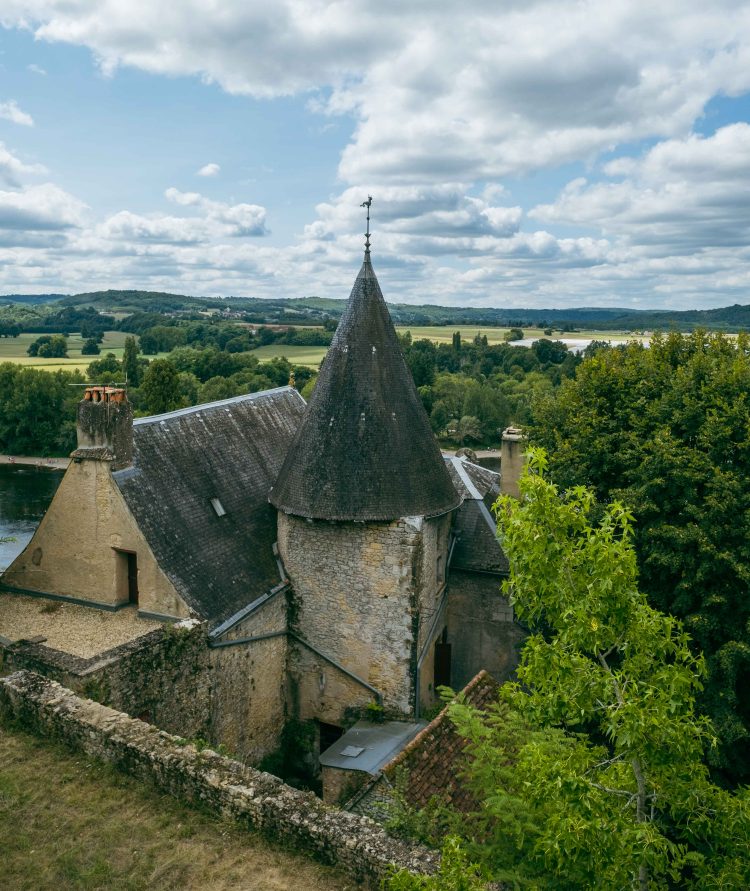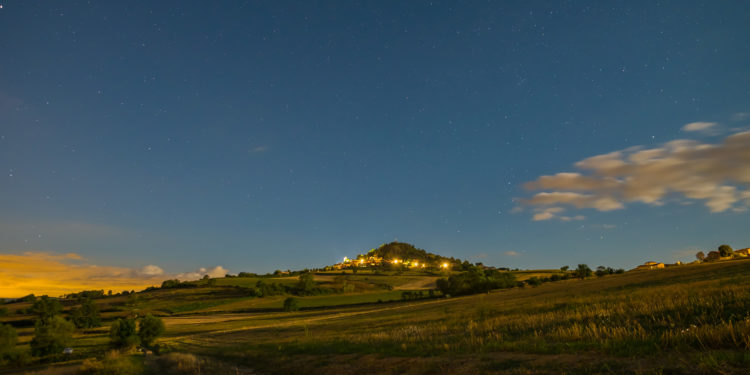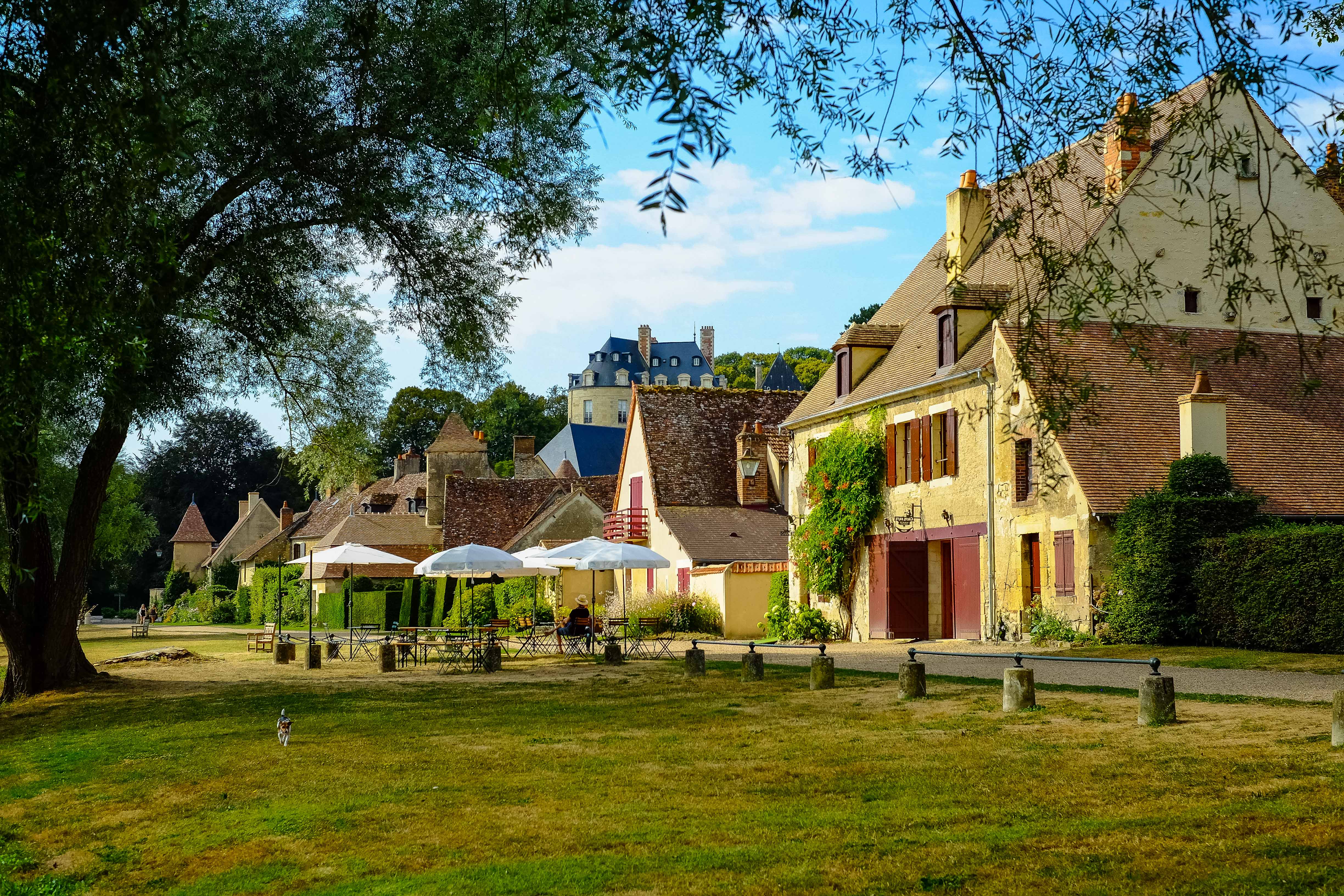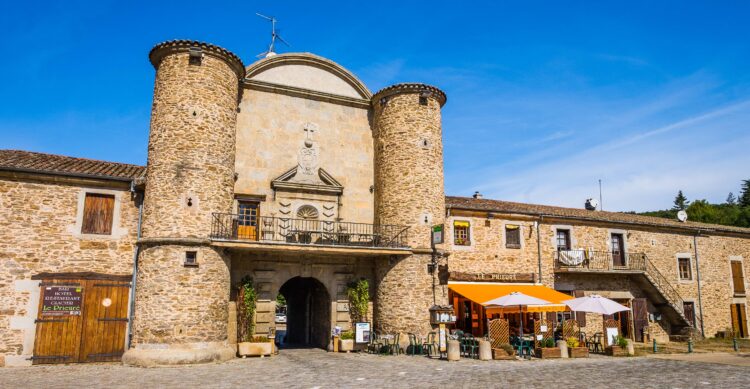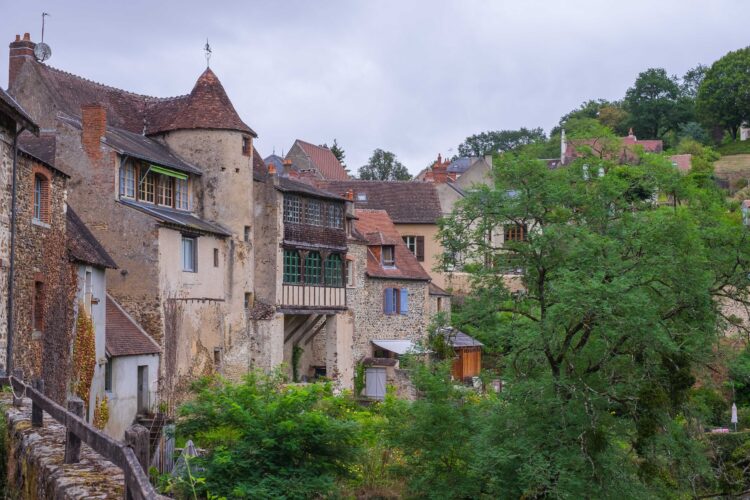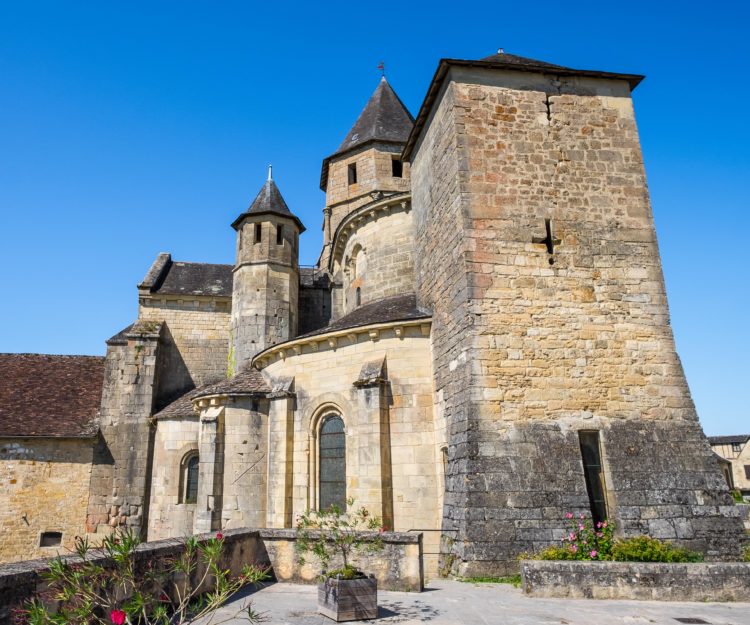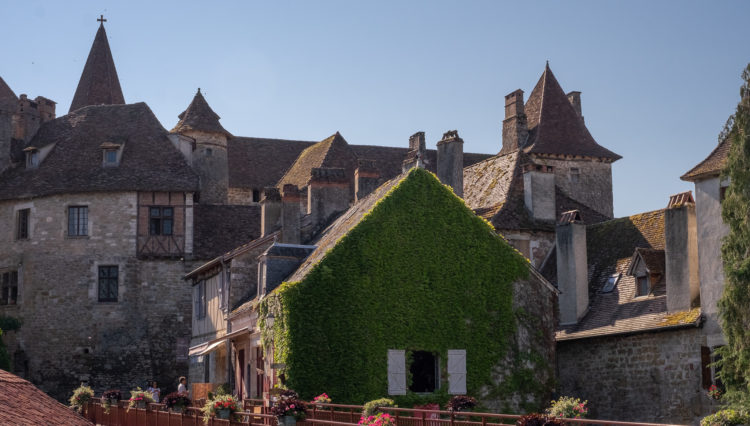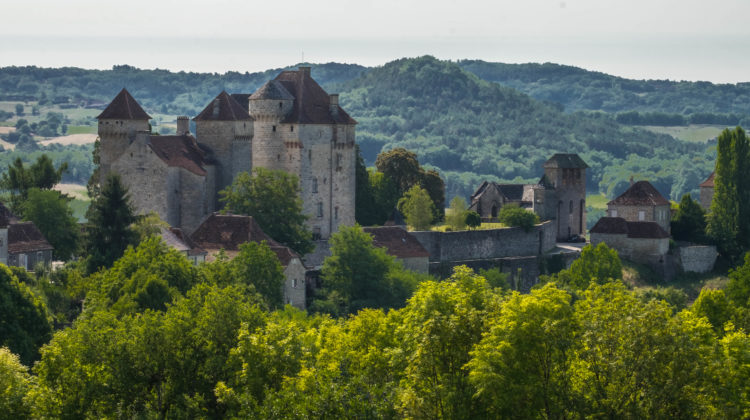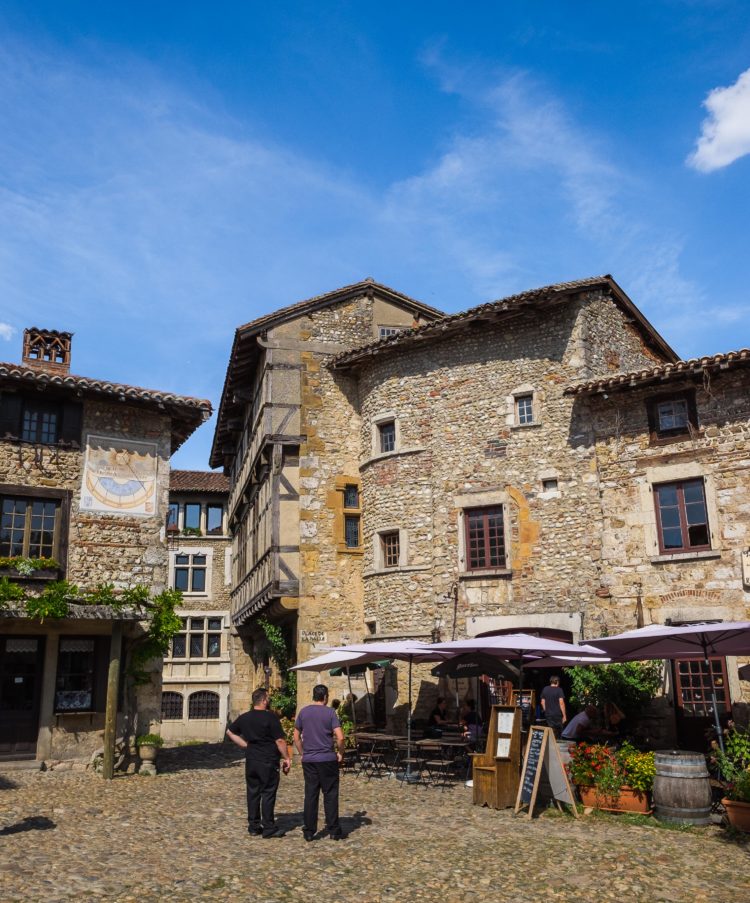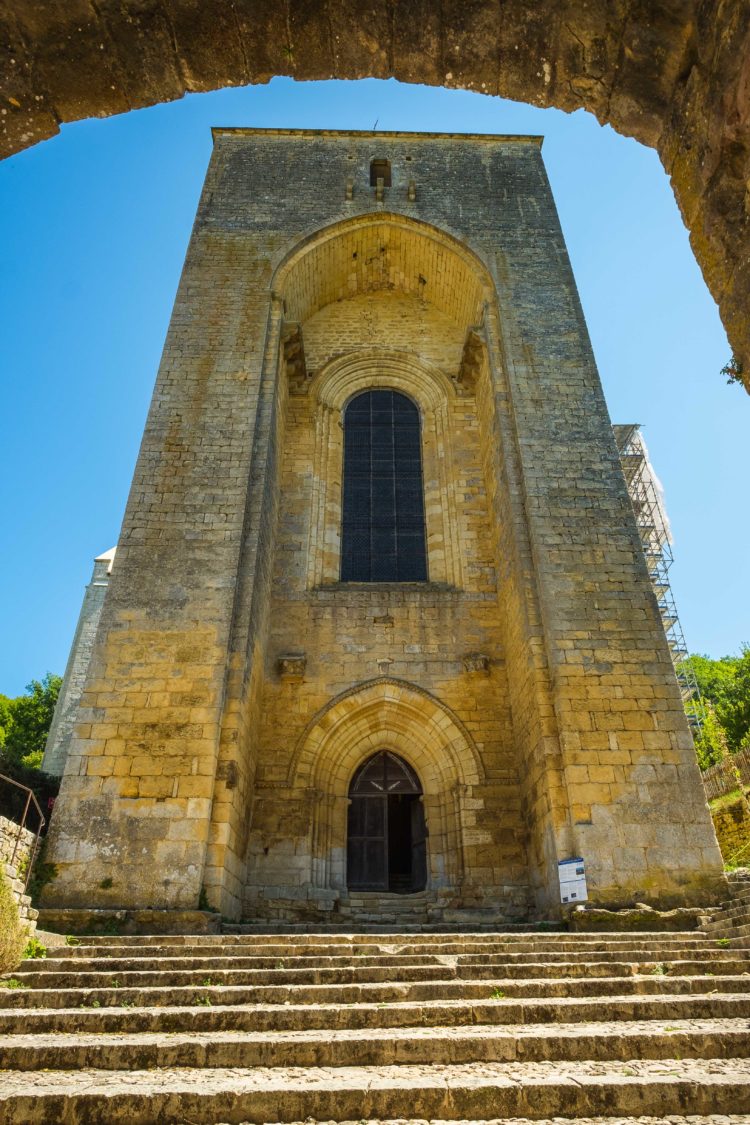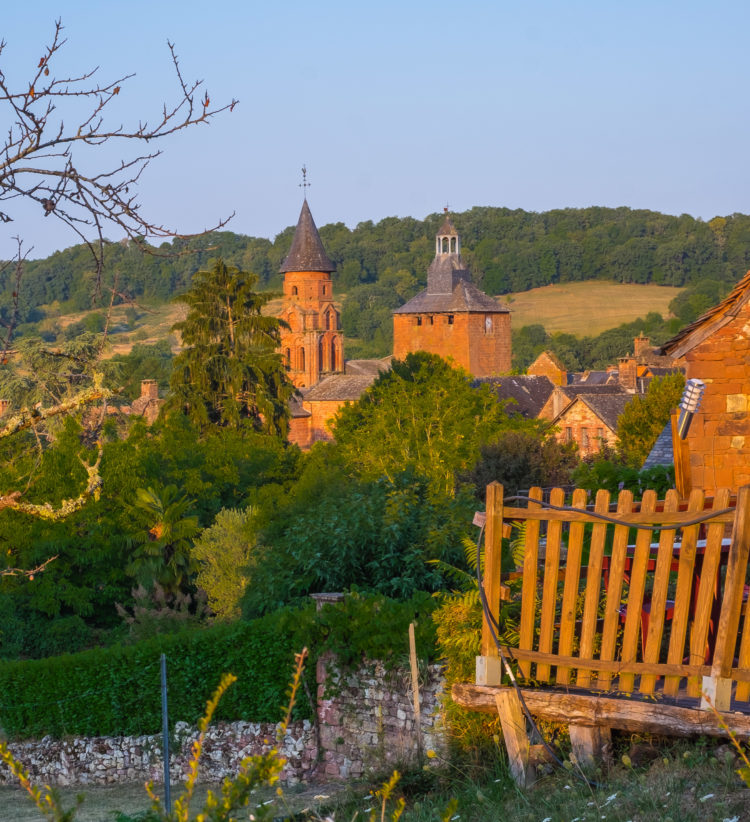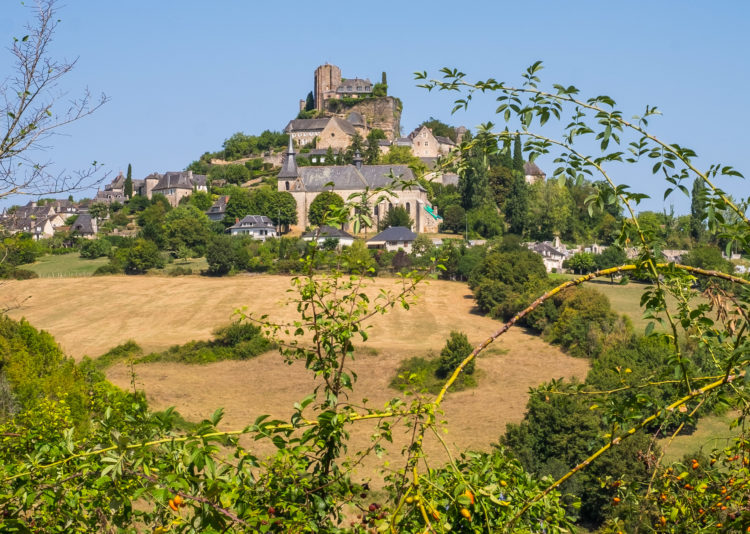I’m not even halfway up the steep principal street and already I’m gasping for air as I approach the center of Limeuil. Fortunately, there are plaques telling the story of the village’s history every few yards, so it’s easy enough to stop and read one to mask my lack of physical fitness. I can’t remember an approach to a town’s center this physically demanding since my visits to the great fortress at Beynac, or the upper reaches of the castle keep at Commarque. But already I can tell that this town is worth the effort. There are two very good reasons they ask all visitors to park at the bottom of this steep hill. The first is practical: Limeuil is […]
Category: Most Beautiful Villages
Usson – the scene of Queen Margot’s 20-year Exile – is officially one of France’s “Most Beautiful Villages”
We were having lunch in Usson – officially one of France’s “most beautiful villages”. Our table was on the terrasse of the Auberge de Margot, hanging on the edge at the top of the hill that gives Usson its spectacular views across the plains and stretching to the blue chain of extinct volcanoes 30 miles away. And as we finished our meaty cabbage rolls, I looked around this little village and was reminded once again that Sarah Vowell** is right: “The more history I learn, the more the world fills up with stories.” Usson – this quiet little village in the deep heart of France – is overflowing with stories from its rich history. Without them, it would be a […]
What makes a village “One of the Most Beautiful” in France?
If you spend much time bouncing around the French countryside, at some point you may come across a village with a distinctive sign at the city limits: “L’un des plus beaux villages de France” – one of the most beautiful villages in France.When you see the sign, you know you’re in for a treat. Among other things, you’re likely to find ancient buildings, quaint medieval streets, elaborate floral displays, and pleasant gathering places where people meet for drinks and meals. But have you wondered what makes a town “one of the most beautiful”? Who decides? Where are the other “plus beaux villages” in the country?
Sainte-Croix-en-Jarez is officially one of France’s “Most Beautiful Villages”
It’s a wet, gloomy day in central Texas, so I’m happy to spend it remembering a much brighter (and hotter) day Karen and I spent in the heart of France in the little village of Sainte-Croix-en-Jarez. It’s a village with an unusual history: from its layout and all the architecture, you would deduce that this is really a monastery. But the French Revolution brought an end to its long vocation as a religious site and turned Sainte-Croix into a secular village. https://www.youtube.com/watch?v=jfV7-EroSsk
Gargilesse-Dampierre is officially one of France’s “most beautiful villages”
I’m always fascinated by stories from French history where someone rises from a remote city or tiny village in the deepest heart of the country to international fame. We’ve seen several such stories in earlier post on this blog: Blaise Pascal doing his famous experiments at the top of the Puy-de-Dome, the nobles of the House of Bourbon rising out of Montlucon to create a royal dynasty that still exists in Europe today, or the Marquis de Lafayette leaving his rustic home in the Auvergne to play a major role in the American Revolution. But it’s almost as interesting to find someone born in the big cities who abandons the bright lights to seek calm in the wild mountains […]
Saint-Robert is officially one of France’s “Most Beautiful Villages”
It’s easy enough, when you’re bouncing around the deep heart of France, to experience this remarkable country in fragments, to imagine each castle and medieval abbey and little village existing in deep isolation, each tucked in its own private corner and invisible to the rest of the world. It’s easy to experience the country as Graham Robb describes it in The Discovery of France (one of my all-time favorite history books): After the Revolution, almost a third of the population (about ten million people) lived in isolated farms and cottages or in hamlets with fewer than thirty-five inhabitants and often no more than eight. […] Many recruits from the Dordogne in 1830 were unable to give their recruiting sergeant their […]
Visit Carennac – officially one of the “Most Beautiful Villages of France”
Being hard to find is obviously not one of the basic qualifications for a town to get on the list of “Most Beautiful Villages” in France. It just happens that some of my favorite places in this elite company are difficult to access – I think immediately of Apremont-sur-Allier and the tiny fortress town at Arlempdes. In fact, it makes sense that a village so far from the normal tourist paths would go through everything required to be designated as a “Most Beautiful Village” – it’s a great part of their marketing strategy to get people to come visit. So it wasn’t unusual to find that the little fortified village of Carennac in the Dordogne River’s valley is also one […]
Visit Curemonte – one of France’s “Most Beautiful Villages” with THREE castles
Since I started this blog, I’ve written about my visits to 23 of France’s “most beautiful villages” (click here to read about my personal “top 10” – and I still have several left to write about in the months ahead). In Curemonte, though, I found something I’ve never seen anywhere else. https://www.youtube.com/watch?v=81cDV8EIJ_8 All of the plus beaux villages in the deep heart of France have the essential elements required to get on the official list: at least a couple of historically-significant sites and a willingness to invest in making the town attractive to tourists as a destination. Curemonte, though, is distinguished because it has three castles clustered together in one tiny village of 211 inhabitants. And the history of […]
Visit medieval Pérouges – one of France’s official “Most Beautiful Villages”
Once you get to Lyon, the gravitational pull of that great city can make you want to settle in for a while – but let me encourage you to save a day for the 40-minute drive out of town to Pérouges. This medieval gem may already be familiar to you from movies you’ve seen, but it’s worth exploring on its own as one of France’s official “most beautiful villages.” I’ll admit that the timing for our first trip to Pérouges 18 years ago was not the most sensible: we went in February. The temperature had dropped to around -100 C (14 F), and our breath hung in clouds of ice crystals as we wrestled our suitcases into the hotel room. […]
Visit Saint Amand de Coly – officially one of the “most beautiful villages” in France
Some people are put off by the French tendency toward self-criticism and self-deprecation, but I find it somewhat charming. When I got to Saint-Amand-de-Coly (officially one of the “most beautiful villages in France”), I went straight to the massive Abbey of Saint-Amand in the middle of town. It’s a medieval wonder combining a long religious history with a commanding presence as a military fortress. But I was brought up short by its historical marker, which describes, in big letters, “the grandeur and the decadence of an abbey. […W]ars, epidemics, and the abuse of the Abbey’s provisional management mark the steps of a progressive decline.”
Visit Collonges-la-Rouge – the FIRST of France’s “Most Beautiful Villages”
Here’s an example of truth in advertising at its best: the little village of Collonges-la-Rouge in the départements of Corrèze is called “la Rouge” because… well, because it’s red. And it is officially one of France’s “most beautiful villages” because…it’s really beautiful. In fact, Collonges-la-Rouge has a legitimate claim to be called the original “most beautiful village in France”, since it was the town’s mayor, Charles Ceyrac, who conceived the idea of creating an association of exceptional sites in 1982. He eventually convinced 66 of his fellow mayors all across the country to sign on to the project, and the list of plus beaux villages now counts 157 towns in 70 of France’s 101 départements.
TURENNE is officially one of the “most beautiful villages in France”
When you travel around the countries we call “France” or “Germany” or “Italy”, it’s easy to forget that these national entities are fairly recent constructs in the grand scale of history. As Graham Robb points out so well in The Discovery of France, 80% of that country’s population still lived outside towns and cities even as late as the Revolution; even with a King as the “head of state”, the country was still a collection of old provinces and fiefdoms far from the government of Paris. “Being French was not a source of personal pride, let alone the basis of a common identity. Before the mid-nineteenth century, few people had seen a map of France and few had heard […]
